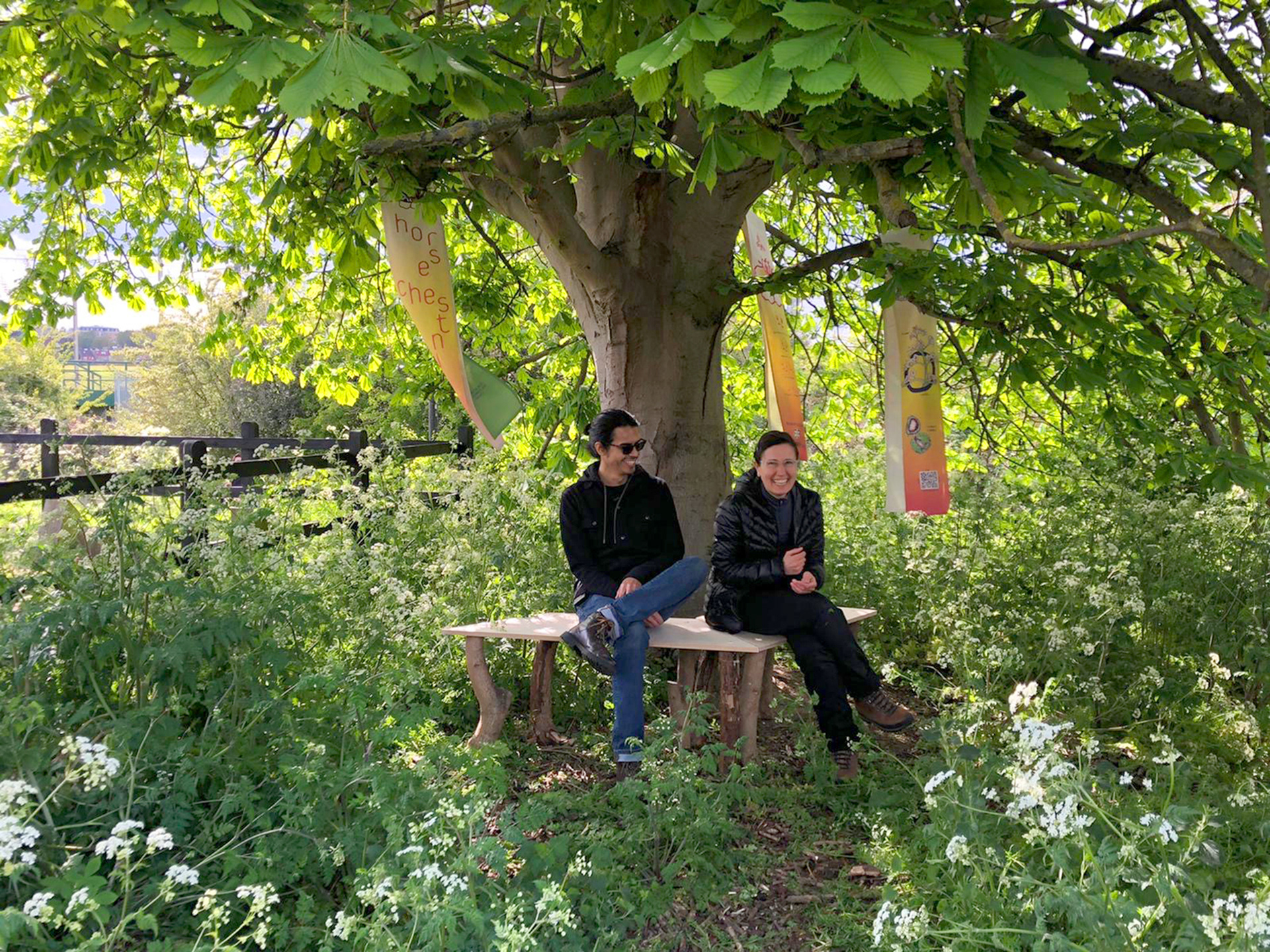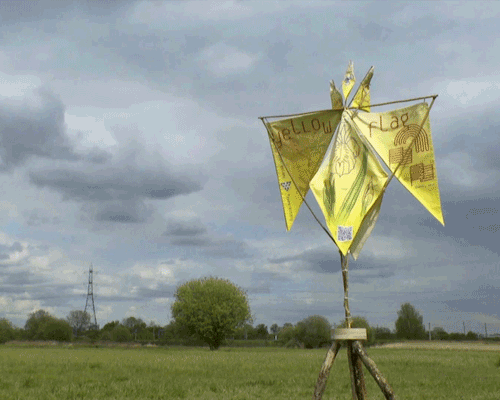Queer Botany at Walthamstow Marshes is a tour with a series of outdoor interpretive displays that tell stories about plants from marginalised perspectives. The focus is on such site-specific wild plants as the dog rose, horse chestnut, coppiced willow and yellow flag. Participants can either learn about them on the project website, find the displays on their own, or be part of a guided tour at the Walthamstow Marshes, northeast London.
The primary audience is the 18-30-year-old east London LGBTQ+ community, interested in environmental issues. The project emerges from the theoretical lens of queer ecology, which brings together queer theory and eco-criticism. A queer ecological perspective can help displace the dualities that are perceived to exist in culture and nature, preferring instead to insist on multiplicity and diversity. The aims are to share marginalised perspectives, support more diverse representations about the environment and outdoors and affirm connections between queerness and nature.
Map risograph printed on recycled paper, Photo by Ryan Powell
To meet the project’s sustainability goals, it was important to prioritise biodegradable materials. Recycled paper, plant-based textiles, and coppiced wood made for more sustainable materials that minimised the project’s carbon footprint. This was also important as a means of embracing the ephemeral and ever-changing aspect of nature as opposed to the traditional approach to outdoor interpretive displays, which often employs metals, plastic vinyl, and toxic paints in the hopes of lasting forever and needing little-to-no upkeep.

Horse chestnut display with benches, Photo by Lucy Hayhoe

Dog rose trellis display

Yellow flag display, Filmed by Sally Ashby
Coppiced willow picnic blanket display made using tree stools, organic ripstop, & printed linen
There is a renewed interest in aligning queerness with nature with a special significance due to the climate emergency. Talking more about plant species can help improve awareness and encourage discussions around biodiversity. Through the event in Walthamstow Marshes, we brought people from the community together to discuss the environment, informed people on queer ecology, shared marginalised LGBTQ+ stories, and brought attention to wild plants in the Marshes. Plants hold a wide variety of stories to be explored through narratives new and old.
Process
Site research
Social media & event promotion
Emotional map of the visitor experience
Visual language
Material language
Visualisations
Technical drawings for dog rose trellis
Interpretive display making
QR codes go to the project website with audio descriptions & more information, Photo by Ryan Powell
Methodology diagram
Queer Botany
At Walthamstow Marshes
Identity, Exhibition, Illustration, Research, Writing
Winner of the 2021 Spatial Cultural Equity award from the Spatial Practices Program Prizes
Nominated for a MullenLowe NOVA Award, the Spatial Practices Prize, & The Steve Lumby Drawing Prize
Botanical and Horticultural Consultation: Sophie Leguile
Botanical Consultation: Lizzie Roeble
Editing: Kiron Ward
Concept Development and Installation: Lucy Hayhoe
Making and Installation: Rosa Pascual
Spatial Design Consultation: Phark Lertchanyakul
Sewing and Pattern Cutting: Leanne Finn-Davis
Film: Sally Ashby
Installation: Jess Barter, Haruyasu Yanagi, Callum Murphy
Special Thanks: Beth Shepherd, Xavier Llarch Font, Andy Stevens, Thomas Butler, Kevin Flude, Claire Healy, Tricia Austin